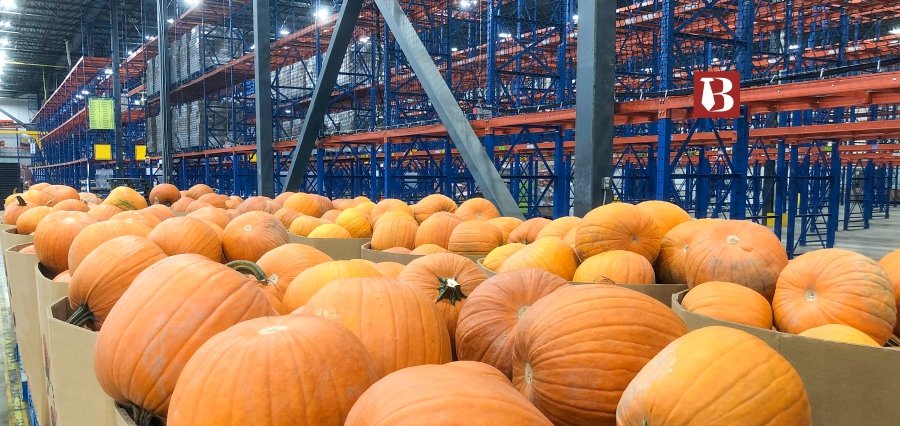Safe and Secure
Agriculture in the 21st century is confronted with various problems unheard of in nature. Global warming, uncertainties in weather, sudden increase in human population, declining natural resources, and post-harvest losses are some of the challenges that agriculture in the 21st century must address swiftly and efficiently to address the food security requirements of the world. This change involves the acknowledging of the importance of sustainable agricultural storage. These are not solely about preserving food safe to consume—they’re about preserving the planet, avoiding waste, maximizing farmers’ revenues, and creating food resilience in a risky world.
The international food system is under tension, Food and Agriculture Organization of the United Nations estimating one-third of all the food produced globally as lost or wasted. Most of this loss takes place after harvesting, especially in the third world where improper storage facilities are the norm. This is where sustainable agricultural storage facilities fit in. By preventing wastage of food, reducing pest-related losses, and keeping the produce fresh, such systems ensure more quantities of food make it to the consumers’ tables in good health. This, besides ensuring food safety, also spares the environment the expense of wasted resources such as water, land, and energy used in farming.
Farmers are now dealing with unpredictable weather patterns, which can lead to unpredictable transportation and delivery times. Rainstorms, floods, and droughts are intense and intensifying, putting harvested crops under danger unless they are stored safely. Green farm storage facilities are useful in the situation. In contrast to other traditional technologies, which consume resources either in terms of material usage or energy, new storage technologies are climate-resilient, environmentally friendly, and energy-saving. Solar-powered cold stores and grain silos with seal systems are some of these technologies and are being marketed to rural communities to ensure that farmers have an easy way of storing produce over extended durations without loss of quality.
One of the highest values of sustainable farm storage technology is that they can help smallholder and subsistence farmers—who are most vulnerable to post-harvest loss. They typically don’t have access to commercial-scale storage, especially in developing economies. By introducing low-maintenance, scalable, and low-cost storage technology, they may be able to break their dependence on instant post-harvest selling, which is typically at knockdown market prices due to gluts. Farmers with storage can wait for superior market prices, improved income assurance, and reduced rural poverty.
In addition to individual benefit, sustainable farm storage also adds to supply chain efficiency. Food storage releases pressure from transport infrastructure to jam crops into markets. This reduces the logistics carbon load, makes food cheaper by stabilizing supply, and acts as a crisis cushion. For example, during the COVID-19 pandemic period, the disruption of transportation in towns and market access resulted in tremendous food loss in the majority of regions. Governments and cooperatives that had invested in decentralized sustainable storage rode out the crisis and reduced losses.
Technology is the key driver for enhancing sustainable storage practices in agriculture. Sensors, smartphone apps, and IoT devices in storage warehouses help farmers monitor temperature, humidity, and gas levels remotely. Besides maximizing warehouse space, it also provides valuable information for planning future harvests and control. Moreover, innovations such as biodegradable packing material, modular storage unit, and decentralized cooling facilities are under research in various areas to integrate storage practice with environmental objectives.
Another factor that is extremely important to keep in mind here is environmental sustainability of storage practice. The traditional fossil fuel-powered refrigeration machinery emits greenhouse gases and are economically and environmentally expensive. Greenhouse gas-free sustainable agriculture storage facilities, on the other hand, employ renewable energy resources, recycled materials, and minimal or no waste production. For instance, solar-powered cold storage facilities minimize emissions and expenditure significantly and thus become a highly viable option where electricity supply is not guaranteed. Locally available and eco-friendly materials during construction also minimize environmental costs of large-scale infrastructure development. Government and policy also contribute towards facilitating sustainable farm cold stores.
Government and multilateral support has to be made available to fund farm infrastructure, tax concessions or subsidies have to be offered on green technology, farmers must receive training on sustainable agriculture, public-private partnerships will bridge gaps between availability and innovation, and even the most remote of farming communities can be empowered with hi-tech storage facilities. The complementary policies allow the countries to turn an event into a setting where green storage is no longer a privilege but a lifestyle. Social justice is also included. Women make up most of the farmworkers in most of the world but do not have access to the majority of storage. Inclusive approaches to sustainable agriculture storage facilities ensure gender differentials in agriculture are minimized by granting women full rights to store, sell, and benefit from their produce. This ensures effective reinforcement of greater economic and social development goals, for example, gender equality and local resilience.
There is also growing awareness among consumers as an emerging driver of demand for farm produce stored sustainably. As consumers seek more sustainable, more organic, or more ethically sourced products, they also demand that products be stored sustainably in the same way. Retailers and suppliers feel mounting pressure to green the supply base and make it transparent. Further down the supply chain, effective, sustainable storage solutions help work towards meeting those goals and earn the confidence and trust of consumers in brands.
With the help of today’s challenges—climate fluctuation to market volatility—the assurance of food quality, loss reduction, and conservation of natural resources is a non-negotiable imperative. Sustainable farm storage technology provides a three-pronged approach to these challenges, reconciling economic, environmental, and social needs at the same time. They are amongst the most important pieces of a full-fledged agricultural revolution aimed at delivering food systems capable of nourishing an increasing global population without depleting the world’s resources.
Finally, the imperative to adopt sustainable farm storage practices has never been so necessary.
With the farm sector’s complex and globalized world challenge, these solutions are necessary and an opportunity. They avert food loss, save farmers’ incomes, mitigate environmental degradation, and make food systems resilient and reliable. By means of either policy action, technological advancement, or civic participation, investment in sustainable storage capacity is the step necessary on the path to a secure and equitable future for food.









